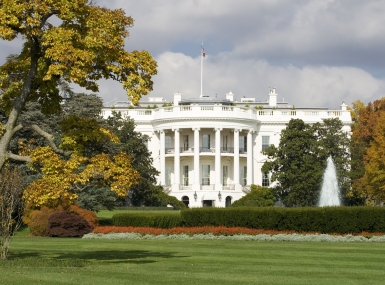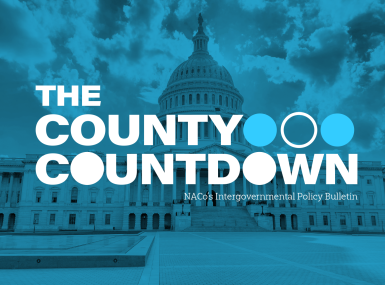Reauthorize the Temporary Assistance for Needy Families (TANF) Block Grant

Author

Julia Cortina
Upcoming Events
Related News
ACTION NEEDED
Urge your Members of Congress to enact a long-term, substantive reauthorization of the Temporary Assistance for Needy Families (TANF) program.
BACKGROUND
Administered by the U.S. Department of Health and Human Services (HHS) Administration for Children and Families (ACF), TANF provides states with flexible funding for programs aimed at promoting stability, family preservation, and access to employment among low-income households with children.
Although TANF is a partnership between the federal government and states, nine states representing 52.4 percent of total participants delegate TANF administration, including Maintenance of Effort (MOE) requirements, to counties: California, Colorado, Minnesota, New Jersey, New York, North Carolina, North Dakota, Ohio and Virginia. In FY 2023, these states represented $16.8 billion, or 53 percent, of total federal, state and local TANF expenditures (including funds transferred to the Child Care Development Fund (CCDF) and Social Services Block Grant (SSBG).
TANF represents an important source of flexible funding for a variety of anti-poverty activities benefiting vulnerable county residents, including cash assistance, child care, education, job training and work support programs. In FY 2023, states used 25 percent of TANF and MOE funds for basic assistance, 8 percent for work, education and training activities and 12 percent for child care (including funds transferred to the Child Care Development Fund).
While states have significant flexibility in using TANF funds, the program does impose certain limitations. Families do not qualify for cash assistance under TANF unless states require recipients to participate in narrowly defined “work activities” and a share of a state’s participants meet a minimum weekly work threshold of 30 hours.
There is also a five-year limit for cash assistance to families that include an adult recipient, although states may exceed the time limit for up to 20 percent of their caseloads based on hardship. Program rules also require states to penalize individuals who fail to meet work requirements with a partial or full reduction in cash benefits.
The Fiscal Responsibility Act of 2023 (FRA) (P.L. 118-5), brought new program changes to TANF work requirements. Under current law, states must ensure that at least 50 percent of single- parent families and 90 percent of two-parent families have adults engaged in work-related activities to receive the full federal block grant. However, for states that have reduced their TANF caseloads since 2005, these percentages are lower. The FRA recalibrates the caseload reduction credit to 2015 levels instead of 2005 levels, thus narrowing that flexibility for states. Additionally, the law authorized a pilot program for five states to replace traditional work participation requirements with alternative "work and family outcomes" benchmarks negotiated with HHS. Three county-administered states were among those initially selected in 2024, but the decision was rescinded in March 2025, and a new RFI was issued in May. NACo has urged federal partners to ensure county-administered states are included in the new round of selections.
As an entitlement, TANF is not subject to the annual appropriations process. However, TANF funding has remained at $16.5 billion annually since its inception, with no growth for inflation, while the formula for state allocations remains linked to data from the mid-1990s. To be eligible for the block grant, states must meet a MOE requirement, meaning they must spend state dollars on TANF-allowable activities. Congress last reauthorized TANF in the Deficit Reduction Act of 2005 (P.L. 109-171) and has renewed the program through a series of short-term extensions since its expiration in 2010. Most recently, Congress passed a continuing resolution in March 2025 that included an extension of the TANF program through September 30, 2025. Given our role in administering TANF and the importance of the program to supporting low-income county residents, a long-term TANF reauthorization with substantive program improvements and adequate funding is critical for all counties.
KEY TALKING POINTS
- TANF provides funding to states to help families reduce welfare dependency and allows states to design and implement the program according to their needs.
- Counties that operate TANF have a direct stake in the program because they share administrative costs and may also fund part of the state MOE requirements.
- When states are directed to sanction TANF participants for failing to meet program requirements, the reduced benefit can lead to county residents facing increased economic hardship, new barriers to employment and increased reliance on other county support programs.
- A long-term TANF reauthorization will provide program continuity and represents an opportunity to make substantive improvements to the program. Short-term extensions create uncertainty and make it difficult to plan and implement long-term program changes.
- TANF reauthorization should provide states greater flexibility in determining which activities count as “work activities.” For example, states should be allowed to count higher education as a “work activity.”
- Many TANF families struggle with multiple barriers to self-sufficiency that make it difficult to meet the full participation requirements. TANF should provide states and counties with flexibility to provide partial credit to families with special needs.
- TANF funding should increase annually commensurate with the rate of inflation to ensure that the program’s actual value does not erode over time.



